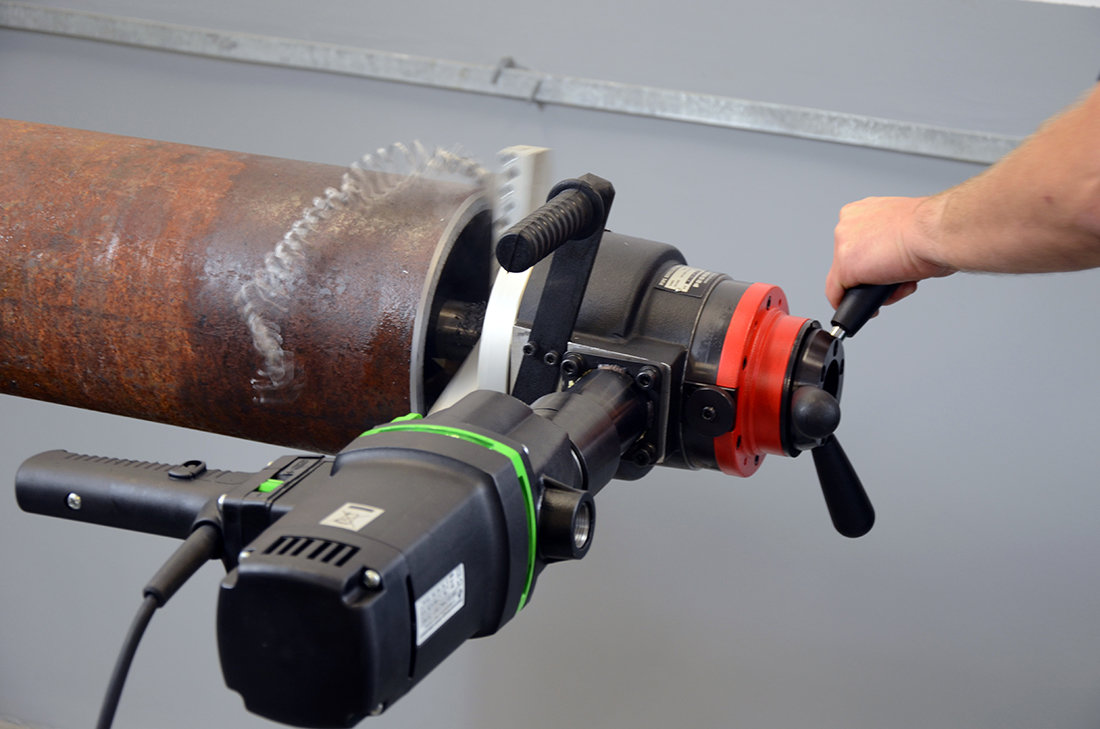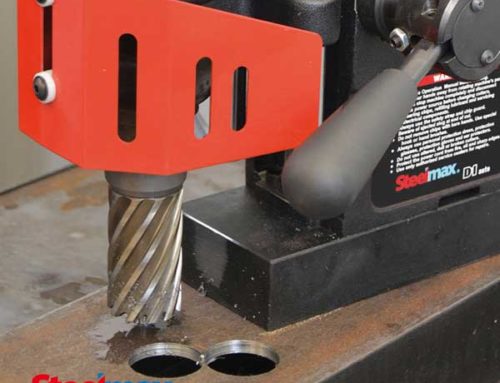The welding shop of the 21st Century has at its disposal many new and innovative technologies to improve productivity. Advancements in process control, automation, filler metals and shielding gases have come at a rapid pace. Implementation of these advancements can lead to significant costs savings, improvement in quality and reduction in rework for many shops. It is however very important to remember that, even with these advancements, basic welding fundamentals are still key to having a successful operation.

There are several different methods used to prepare single and double V groove joints for welding. Some methods are more advantageous than others.
Grinding bevels with fiber wheels is still the norm for many shops. This process requires little capital expenditure. Electric grinders are inexpensive and a type 27 fiber wheel costs just a few dollars. The downside to this method is that it is slow, inaccurate and labor intensive. Without proper control, grinding can lead to inaccurate and inconsistent bevels. This method also presents some very serious safety concerns. Grinding wheels generate hazardous dust that is not only harmful to the operator but also to the rest of the employees in the vicinity and, if not used properly, can cause physical injury from disintegrating wheels.
Oxy-Fuel or Plasma burning are also common methods of beveling. These processes are much faster than grinding and when used in conjunction with automation, can be very productive. They are not, however, without shortcomings. Burning requires a higher level of skill. Achieving quality Double V Groove bevels with these processes can be challenging. Kerf, torch position and torch angle can create variations in the root face dimension(land) that often lead to problems with weld penetration. Thermal Cutting can also produce surface oxidations, decarburization and a Heat Affected Zone (HAZ), all of which require secondary grinding operations to prepare the material for welding.
Creating bevels by milling has always been the most advantageous method of beveling. Milling machines create precise, uniform bevels without creating dust or HAZ. The bevel is weld ready and requires no secondary operation. Until recently, milled bevels were a luxury that involved the use of vertical mills and CNC machining centers. The cost of this equipment required large capital expenditures that made them beyond the reach of many shops.
Today, however, there are many new options available in portable beveling tools. These types of tools require limited skill to operate and are relatively inexpensive to implement. Steelmax offers an extensive portfolio of portable beveling tools for both plate and pipe applications. Ranging from portable handheld machines to large automated systems, Steelmax offers a beveling solution for almost every job.



